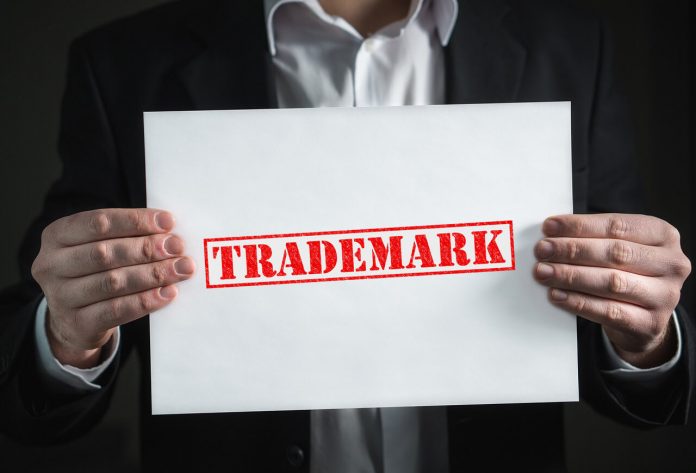This article is written by Jyotika Saroha. It provides an overview of Section 60 of the Trade Marks Act, 1999. It explores the meaning of trade marks, the process of registration of trade marks and the relevant provisions dealing with it. The article further delves into an analysis of Section 60 of the Trade Marks Act, 1999, highlighting its main objectives, applications, and related provisions. It also discusses the judgements pertaining to trade mark rectification provisions.
Table of Contents
Introduction
Intellectual property rights (IPR) is a field of law that rewards the innovation and creativity of individuals by granting them exclusive rights to their work. These rights basically allow creators to acquire rights over the work they have produced using their creativity and ideas, which does not come into the tangible property or physical property. The protection under intellectual property is given to the intangible assets that cannot have a physical presence. They are brought into existence by using human thinking and intellect. The main types of intellectual property include patents, trade marks, copyrights, and designs, among others. This article will address trade marks, an important form of intellectual property, and the relevant statute, particularly Section 60 of the Trade Marks Act, 1999.
A trade mark is a mark that can be graphically represented and is used to distinguish the goods or services of one person from those of others. It may include the shape of goods, their packaging, or a combination of colours. This mark serves to indicate that the product has been made or manufactured by a particular person, helping to differentiate it from other products. Trade marks facilitate the sale of goods and services by providing products with recognition. The significance of trade marks has grown alongside the growth and development of the business sector. They help differentiate the goods of an owner who has registered his/her trade mark. Once a trade mark receives legal recognition and protection, it cannot be infringed upon by others, granting the owner exclusive rights.
The registration of a trade mark is important for the purpose of obtaining such legal recognition, as the proprietor receives a certificate of such registration. The detailed information of such registered marks is maintained in the Register of trade marks, which is an official record maintained by the Registrar. Section 60 comes into play when there is a need to rectify any of the entries in the Register.
Section 60 specifically addresses the amendment or substitution of goods and services in the Register of trade marks. It grants the Registrar the power to make necessary corrections in the Register if there is any error or defect in the entries. Additionally, it outlines the procedure for approaching the competent authorities through an application to request amendments or corrections. The correction of the Register ensures the accuracy of information and provides an updated version of newly added goods and services.
Background of trade marks
India has a rich history of trade marks, dating back to the 10th century, when merchants and traders used ‘merchant marks’ in order to assert their ownership over goods like cattle, currencies, and more. However, before 1940, there was no specific legislation governing trade marks in India. During that time, various problems arose regarding the infringement and passing off, which were resolved using Section 54 of the Specific Relief Act, 1877. The registration of trade marks and the establishment of ownership were governed by the Registration Act, 1908.
The first specific legislation that specifically dealt with the trade marks in India, the Trade Marks Act, 1940, was introduced to address these challenges. However, this Act did not fulfil the growing need for protection for trade marks and was later replaced by the Trade and Merchandise Marks Act, 1958, which, after some time of its implementation, was repealed by the Trade Marks Act, 1999, which is currently in force. The Trade Marks Act, 1999, was enacted in line with the provisions of the TRIPS Agreement (Agreement on Trade-related aspects of Intellectual Property Rights). It deals with various aspects of trade mark law, including registration, procedures, duration, effect of registration, certification, rectification and correction of the Register, etc.

Meaning of trade marks
In simple terms, a trade mark is a symbol, letter, combination of colours, or device used for the purpose of differentiating the goods and services owned by a person from those of another, as he attains ownership over those goods and services. A trade mark provides protection to the proprietor or the owner by granting him exclusive rights to use the mark in the public domain. The Trade marks Act, 1999 provides for the definition of trade marks under Section 2(1)(zb) as a mark that is capable of graphical representation and of distinguishing the goods and services of one person from another. It may also include the shape of such goods, their packaging, and the combination of colours. If we comprehend the definition of trade mark given under Section 2(1)(zb), then the term ‘mark’ has to be understood first, as a trade mark must be a ‘mark’ in order to possess the basic features of a trade mark. Section 2(1)(m) of the said Act defines the term ‘mark,’ which includes the following:
- Device,
- Brand,
- Heading,
- Label,
- Ticket,
- Name,
- Signature,
- Word,
- Letter,
- Numeral,
- Shape of goods, and
- Packaging and combination of colours or any combination thereof.
Registration of trade marks in India
Before delving into Section 60, we must be aware of the Register of trade marks and the procedure for trade mark registration. The procedure for the registration of trade marks is provided under Chapter III of the Act, from Sections 18 to 26. Section 18 deals with the application for registration, which needs to be submitted by any person who claims to be the proprietor of a trade mark and wishes to get it registered. The said person shall apply in writing to the Registrar in the prescribed manner.
As per Section 19, the acceptance of such an application can also be withdrawn by the Registrar if he believes that the said application was accepted in error or that the trade mark should not be registered. Section 23 provides for the registration of a trade mark: if the application made under Section 19 has been accepted or has not been opposed, or if the decision has been given in favour of the applicant, the Registrar shall register the trade mark. The said trade mark must be registered within 18 months of the filing of the application. Upon registration, the Registrar issues the applicant a certificate in the prescribed form, bearing the seal of the Trade Marks Registry.
Details of such a registered trade mark and the proprietor who got it registered are recorded in a Register. As per Section 6 of the Trade Marks Act, 1999, the Register is a record of trade marks kept at the head office of the Registry of Trade marks. In the said Register, the registered trade marks, along with the names, addresses, descriptions, and other relevant information with respect to the proprietors of trade marks, are recorded. The Registrar keeps the Register under his control or management.
There may be instances where the records maintained with the Register need to be amended. Section 22 of the Trade Marks Act, 1999 provides for the correction and amendment of the Register, whether before or after the acceptance of a trade mark application. Chapter VII of the Act, from Sections 57 to 60, specifically deals with the rectification and correction of the Register. Among these provisions, Section 60 offers one method for rectifying the Register by way of classification of goods and services.
Section 60 of Trade marks Act, 1999
Objective
Section 60 grants the Registrar the power to make necessary adjustments to the classification of goods and services in order to ensure that the entries in the Register are accurate and up-to-date. This section also requires that concerned parties be notified about any such changes so as to make them aware of the said changes and provide them an opportunity to raise objections if needed. Compliance with Section 60 is crucial for maintaining the integrity of the Register of trade marks and aligning with international standards and practices.
Detailed breakdown of Section 60
Sections 57 to 60 of Chapter 7 of the Trade marks Act, 1999 deal with the rectification and correction of the Register of trade marks. Section 60 specifically addresses the adaptation of entries in the Register of trade marks to accommodate amended or substituted classifications of goods.

Section 60(1)
Section 60(1) of the Trade marks Act, 1999 stipulates that the Registrar shall not make any amendments or changes to the Register that would affect the addition of goods or class of goods or services. Such amendments cannot be made in respect of trade marks that were registered immediately before the amendment or before the registration of a trade mark in regard to those goods and services.
Proviso to Section 60(1)
An exception to Section 60 (1) is outlined in the Proviso. According to this Proviso, Section 60(1) shall not be applicable in the case wherein the Registrar is satisfied that the addition of goods, despite the undue complexity it may introduce, will not affect the quantity of goods and services or be detrimental to the rights of any person.
Section 60(2)

Section 60(2) mandates that for the purpose of making amendments in the Register, a proposal shall be made and it shall be made known to the registered proprietor of the trade mark. Secondly, it provides that any aggrieved party may oppose such a proposal before the Registrar if, in case it contravenes the provisions of Section 60(1).
Application of Section 60
The application of Section 60 comes into picture when there is an error or incorrect information in the Register of trade marks, particularly concerning the classification of goods and services. This section comes into play to rectify such inaccuracies to ensure that the Register reflects the correct and current information.
In order to initiate such changes under Section 60, an application needs to be filed with the Registrar of Trade Marks or, if applicable, the Intellectual Property Appellate Board (IPAB). The application should be accompanied by supporting evidence and relevant documents to substantiate the need for amendments.
These amendments are crucial for maintaining the accuracy and integrity of the Register, ensuring that the entries for goods and services are up-to-date. By addressing errors and updating classifications, Section 60 helps prevent potential conflicts and maintains the Register’s reliability for all stakeholders.
Related provisions
Section 57 of Trade marks Act, 1999
Section 57 provides for the power to cancel or vary registrations and to rectify the Register. Section 57(1) provides that an aggrieved person may make an application to the High Court or the Registrar in the prescribed way. The High Court or the Registrar, after considering the application, may issue an order, as they deem fit, for the purpose of cancelling or varying the registration of a trade mark if it is on the ground of non-compliance or failure to fulfil the condition in the Register.
Section 57(2) permits an aggrieved person to make an application to the High Court or the Registrar if there is an omission or error in the Register. The said application may be made if an entry is missing without any sufficient cause or by any error or defect. In that situation, the High Court or the Registrar may make such an order for making, varying, eradicating or deleting such entry as deemed fit. Section 57(3) allows the High Court or Registrar to determine what actions are required or may be necessary for the rectification of the Register.
Section 57(4) provides that the High Court or the Registrar may, after giving notice or an opportunity to be heard to the parties involved, issue an order on its own motion as referred to in the previous sub-sections. Section 57(5) requires that the High Court’s order for rectification of the Register be communicated to the Registrar in the prescribed manner. Upon receiving such notice, the Registrar must update the Register accordingly.
Section 58 of Trade marks Act, 1999
Section 58 deals with the correction of the Register wherein upon an application made to him by the registered proprietor, the Registrar may:
- Correct any error in respect of the name, address, etc.,
- Enter any change in the name or address of the registered proprietor,
- May cancel the entry of a trade mark from the Register,
- May also strike out or remove goods or services in respect of which the trade mark is registered.
Section 59 of Trade marks Act, 1999

Section 59 deals with the alteration of registered trade marks and outlines the procedure. Section 59(1) permits a registered trade mark owner to apply to the Registrar for permission to add or alter the trade mark. The Registrar may refuse or grant the said leave. Section 59(2) states that the Registrar may cause an application to be advertised in a prescribed manner if he thinks fit. If any person opposes the application after the advertisement, the Registrar must provide an opportunity for the parties to be heard before deciding the matter. Section 59(3) requires that any alteration of the trade mark, once permission is granted, be advertised in the prescribed manner.
Conclusion
It can be concluded that trade marks are used to identify the owner or proprietor of goods and services and to protect their rights. Section 60 provides that the entries made in the Register of Trade Marks need to be adapted in accordance with amendments or substitutions made by the Registrar during the classification of goods and services. This provision reflects the Registrar’s power to make necessary amendments and substitutions to the classification of goods and services. This provision was added to ensure that the entries in the Register remain updated and accurate. The prime objective of this provision is to ensure that entries are current and that all the proprietors of trade marks are informed of such updates. It is also the duty of the registered proprietors to stay informed about such changes in order to adhere to the rules of trade mark protection.
Frequently Asked Questions (FAQs)
Who benefits from registering a trade mark?
A trade mark is a symbol used to differentiate one’s goods or services from those of others. The individual or entity who owns the goods and services is the owner or proprietor of the said trade mark. By registering the trade mark under the Trade Marks Act, 1999, the proprietor gains legal protection and exclusivity over the use of the trade mark, preventing others from using it without permission and benefiting from it.
Can changes or corrections be made to the Register of Trade Marks?
Yes, according to provisions under Sections 57 to 60, changes or corrections can be made to the Register.
What is Section 60 of the Trade Marks Act, 1999 about?
Section 60 of the Trade Marks Act, 1999 addresses the adaptation of entries in the trade mark Register to reflect amended or substituted classifications of goods or services; it outlines how and when the Registrar can make changes to the Register, including adding goods or classes or annotating trade mark registrations.
Can the Registrar add new goods or services to an existing trade mark registration under Section 60?
No, Section 60(1) prohibits the Registrar from making amendments that would add goods or classes of goods or services to an existing trade mark registration immediately before the amendment. However, exceptions are allowed if compliance would lead to undue complexity or if the change would substantially affect any person’s rights.
Why is it important to comply with Section 60 when making changes to the Register?
Compliance with Section 60 is crucial for ensuring that the Register is accurate and up-to-date. It helps prevent unnecessary complications and protects the rights of trade mark owners by ensuring that any changes do not adversely affect their existing rights or the rights of other parties.
References
- https://www.altacit.com/wp-content/uploads/2021/09/evolutionoftrademarklawsin_india.pdf
- https://www.worldwidejournals.com/indian-journal-of-applied-research-(IJAR)/recent_issues_pdf/2016/November/November_2016_1492175968__242.pdf
- https://ssrana.in/ip-laws/trademarks-in-india/trademark-rectification-india/
- https://www.lawyersclubindia.com/articles/the-trademarks-act-1999-14361.asp
- https://bnwjournal.com/2020/05/02/history-and-development-of-trademarks-in-india/
Students of Lawsikho courses regularly produce writing assignments and work on practical exercises as a part of their coursework and develop themselves in real-life practical skills.
LawSikho has created a telegram group for exchanging legal knowledge, referrals, and various opportunities. You can click on this link and join:
Follow us on Instagram and subscribe to our YouTube channel for more amazing legal content.
 Serato DJ Crack 2025Serato DJ PRO Crack
Serato DJ Crack 2025Serato DJ PRO Crack










 Allow notifications
Allow notifications



